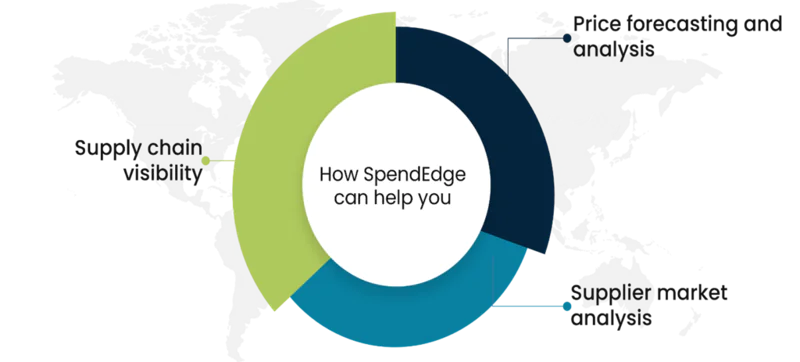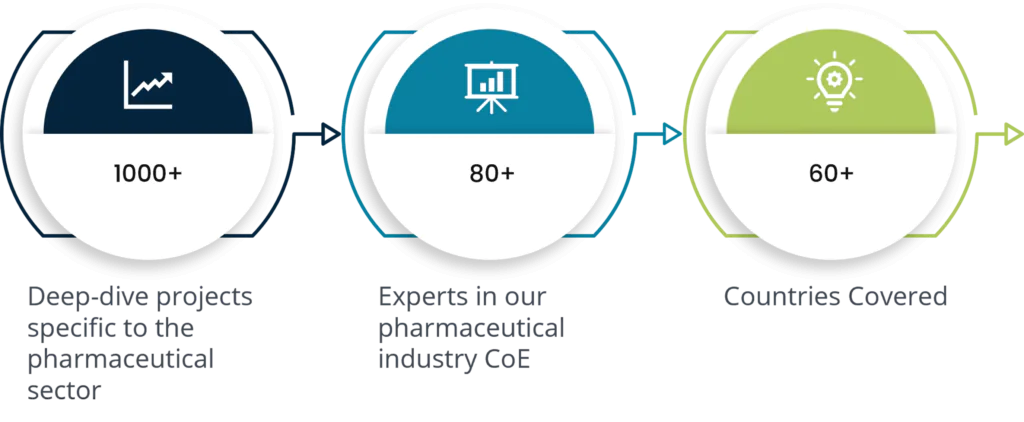By: George Mathew
Key Takeaways
1. Regulatory Compliance: Adhering to stringent guidelines and regulations is crucial for the safe and effective delivery of medications.
2. Cold Chain Management: Maintaining temperature-controlled conditions during storage and transportation is essential for many drugs.
3. Supply Chain Transparency: Ensuring clear visibility across the supply chain helps in detecting counterfeiting, expired drugs, and delays.
4. Disruption Readiness: Preparing for potential disruptions, such as geopolitical events or natural disasters, is vital for maintaining a resilient supply chain.
The pharmaceutical supply chain covers the entire process of producing, distributing, and delivering medicines to pharmacies, hospitals, and eventually the people who need them. It includes several phases, including obtaining raw materials, producing, packing, ensuring quality, distributing, and storing. To maintain the accessibility and security of pharmaceuticals, a variety of parties, including drug producers, wholesalers, distributors, pharmacies, healthcare professionals, and regulatory agencies, are involved in this intricate network. The resilience and efficiency of the pharma supply chain ensures that life-saving medications and healthcare products reach patients promptly. A resilient supply chain can withstand and recover from disruptions, such as natural disasters, pandemics, or logistical challenges, and is essential for optimizing the production, distribution, and availability of pharmaceutical products.
How Does the Pharma Supply Chain Work?
While not always perfect, the pharmaceutical supply chain is an impressively complex and interesting one. The journey of medication to our homes begins with the researchers and raw material suppliers who source the materials. These materials are then utilized by drug manufacturers to make and test the products. Once the medications are ready, they are overseen by regulatory agencies to ensure safety and efficacy. Following approval, pharmaceutical companies coordinate with distributors to move the products. During this stage, cold chain management is crucial for medications that require specific temperature controls to maintain their effectiveness. The medications are then acquired by pharmacies, where they are available for purchase either with or without a prescription.
However, the supply chain is more intricate than this oversimplified overview. A significant role is played by pharmacy benefit managers, who help manage the cost and accessibility of medications. Additionally, supply chain transparency is vital for tracking the movement and handling of drugs, ensuring they reach their destination safely and efficiently. Managing supply shortages and logistics challenges is another critical aspect. Effective inventory management and a robust supply chain platform help in mitigating these issues and maintaining a resilient supply chain. Moreover, collaboration with suppliers ensures a steady flow of necessary components, reducing the risk of shortages.
Cost management is also an essential part of the process, balancing the expenses involved in research, production, and distribution to keep medications affordable for consumers.The pharmaceutical supply chain is a multi-faceted system involving numerous key participants and processes. Each stage, from sourcing raw materials to managing inventory and ensuring supply chain transparency, plays a vital role in delivering safe and effective medications to patients.
What are the main pharma supply chain challenges?
Regulatory compliance is imperative for companies operating in heavily regulated industries. They must adhere to all guidelines and regulations set by competent agencies. In the pharma supply chain, maintaining a reliable “cold chain” presents a significant challenge as most drugs and medicines require specific temperature-controlled conditions during both storage and transportation. Supply chain transparency is crucial for ensuring patient safety and medication effectiveness. It allows for quick identification of potential cases of counterfeiting, expired drugs, and transit delays. Disruption readiness is essential for key players in the pharma supply chain. They need to anticipate and prepare for delays, power outages, inadequate packaging, and other disruptions that can arise due to factors like geopolitical developments, natural disasters, or fluctuations in the availability of raw materials. Cost management is an ongoing challenge that affects every aspect of the supply chain. Finding a balance between innovation and consumer affordability is essential, as both innovation and manufacturing processes require rigorous standards without compromising on costs that could burden end consumers.
Strategies for enhancing the resilience and efficiency of the pharma supply chain
End-to-end visibility of supply chain in the pharmaceutical industry
Throughout the procurement process, visibility into the supply chain must be used to track supply chain performance. This includes monitoring order fulfillment, delivery schedules, product quality, and contract compliance. This tactic enables the analysis of procurement data, the discovery of cost-saving options, the establishment of pricing benchmarks, and negotiations to improve contracts. Additionally, it may enhance the pharmaceutical industry’s adherence to rules and ethical sourcing practices and assist in identifying and mitigating supply chain interruptions. Visibility facilitates collaboration and communication with suppliers and leads to better responsiveness and shorter lead times.
Enhanced supplier traceability practices
Suppliers make up a significant portion of the pharmaceutical supply chain and establishing supplier traceability practices can improve the effectiveness of the supply chain management. It enables the purchasing company to learn more about the performance of its suppliers, including information about the quality of their products, whether they deliver on time, and how they respond to emergencies. Given the sensitivity of pharmaceutical items and the importance of prompt and safe delivery to businesses, pharmaceutical suppliers must be committed to their duties and tight with their supply timings.
Choosing suppliers with the best pricing strategy
Different suppliers may have different pricing strategies and hence, it is important for purchasing firms to analyze these strategies so they may choose the best supplier with the best price strategy. Pharma firms cannot compromise on the quality of medical products, and on-time delivery is crucial for the safety of patients, thus supplier prices should reflect the quality of their labor and product. Purchasing companies can engage in competitive bidding or request proposals to encourage suppliers to offer their best pricing so that they can compare multiple suppliers’ offers and select the one that provides the best value for the organization.
Pharma supply chain best practices
- Embrace digital solutions: The adoption of tools like enterprise resource planning (ERP) systems and cloud-based platforms can improve communication efficiency, increase transparency, and enable real-time monitoring across the supply chain.
- Optimize inventory management: Efficiently managing inventory is crucial, as shortages and excess stock can have significant impact on patient care. Leveraging data analytics, accurate forecasting, real-time inventory tracking, and proper storage conditions helps minimize waste while ensuring timely availability of medication.
- Foster collaboration: The complex nature of the pharma supply chain demands collaboration among all stakeholders to meet regulatory standards and effectively respond to disruptions. Sharing information and working towards common objectives can enhance network resilience and response to challenges.
- Ensure quality management: Maintaining high-quality standards throughout the pharma supply chain is imperative. Best practices entail implementing rigorous quality control measures, conducting regular audits, minimizing human error risks, and enhancing the security of processes and products.
- Consider sustainability: The pharmaceutical industry’s environmental impact calls for the exploration and adoption of sustainable and responsible practices, such as eco-friendly manufacturing, optimizing transportation routes, utilizing recyclable packaging, and implementing effective waste management.
How SpendEdge can help you

Supply chain visibility
Our reports provide you with a comprehensive overview of supply chain activity. We provide supply-side insights and real-time risk warnings to keep you ahead of supply chain uncertainties. We provide insights into supply chain expenses which can help you identify the areas responsible for the increase in costs. At the category level, we aid you in identifying supply risk issues and reduce them, and improve your reputation and dashboard views of supply chain performance by obtaining supply chain sustainability scores. We also assist in examining the supply network’s segment-by-segment efficiency measures.
Supplier market analysis
We help you find out the most recent information on potential and current providers as well as the vendors who can react quickly to choppy market conditions. Through our studies, you can arm yourself with crucial knowledge of current events in the supplier industry, ensuring supply continuity and profitability. To remain competitive, it is important to have a thorough understanding of risk situations involving suppliers. Negotiations with suppliers will be strengthened if you are aware of the risk-mitigation strategies that suppliers have chosen to use. We also provide comprehensive data on supplier performance that is relevant to each KPI, classify suppliers into quadrants based on their operational and functional skills, and rate the suppliers who match your needs the best.
Price forecasting and analysis
Our insights into sourcing from the best- and lowest-cost countries can help you obtain competitive advantages and extend your sourcing from profitable new areas. We give you a list of vendors who can bring growth by thoroughly comprehending and measuring cost performance. You may gain sufficient information about price trends and category market movements with the aid of our category pricing intelligence. The ability to see suppliers’ price structures is enabled by the thorough research of category cost factors. Initiatives for cost optimization assist in locating flaws and inefficiencies as well as cost-saving possibilities, thereby enhancing business operations.
Key players in the pharma supply chain
Suppliers of raw materials
Suppliers of raw materials provide the essential groundwork for drug discovery research to develop treatments. It is crucial for them to maintain precision when handling both common chemicals and complex biological components. A reliable material supplier ensures strict quality control and compliance with regulations such as GMP and GLP, as well as reliable sourcing from various options and on-time delivery to align with the pharmaceutical industry’s often tight manufacturing schedules.
Producers of pharmaceuticals
Responsible for transforming essential ingredients into life-improving and life-saving medications, pharmaceutical manufacturers are likened to the alchemists of the pharma supply chain. A reputable manufacturer adheres to stringent quality control measures and regulations, implements thorough testing protocols, optimizes manufacturing processes for efficiency and cost-effectiveness, and supports innovation.
Regulatory bodies
While not directly involved in the tangible aspects of the pharma supply chain, regulatory agencies play a pivotal role in ensuring consistent quality and patient safety. They establish the standards to which all other supply chain stakeholders must adhere. Additionally, they create guidelines and regulations for everything from research and development to manufacturing, distribution, and even marketing of medication. Regulatory agencies are also responsible for overseeing compliance, promoting transparency, and adapting to the constantly evolving pharmaceutical landscape.
Wholesale distributors
Wholesale distributors act as the link between manufacturers and pharmacies, ensuring the safe and efficient storage and shipment of medications. Typically, distributors make bulk purchases to fulfill various individual pharmacy orders. A good pharmaceutical distributor can manage a sophisticated inventory control system, establish a reliable logistics network, and ensure specific storage and transport requirements.
Pharmacy benefit managers
Similarly to regulatory agencies, pharmacy benefit managers (PBMs) operate “behind the scenes.” Serving as intermediaries between drug manufacturers, insurers, and pharmacies, PBMs work to control costs and ensure access to medication. Ideally, PBMs can capitalize on their bulk purchasing power to negotiate prices and rebates that can be passed on down the chain to the consumer. They compile and analyze data on medication utilization trends and costs for data reporting, which can be used to identify potential areas for cost savings. Last but not least, PBMs strive to balance cost-effectiveness with patient needs when developing and maintaining lists of medications covered by the insurance plans they oversee.
Pharmacies
The direct connection between the pharma supply chain and the consumer, pharmacies can be described as a blend of patient advocates, medication experts, and guardians of public health. They handle refills for multiple medications, ensure proper storage conditions, and maintain meticulous inventory management of stock levels that meet patient needs while minimizing waste, among other responsibilities.
Success Story
A US-based pharma company contacted SpendEdge to assist them in overcoming the supply chain issues they were facing. To prevent supply chain interruptions, the organization sought to learn about supply-side insights and get warnings on supply chain risks. To identify the ideal match for themselves, they looked for comprehensive information on new and current suppliers. They also sought to know the cost performance of the suppliers to obtain the best supplier pricing.
We employed our best experts to cater to the firm’s requirements who provided the client with visibility into the supply chain performance. The supply-side insights provided by us helped the client prevent interruptions to their supply chain. The experts’ report on the risks associated with each segment of the supply chain helped them to take mitigating measures. Our specialists provided information on product quality and timely deliveries for all the suppliers. With the reports on the cost performance of the suppliers, the client was able to select a supplier that offered the most optimal price.

For any similar kind of issues, get in touch with us now, and make use of all our services to experience positive outcomes.
Conclusion
The pharmaceutical supply chain faces numerous challenges that require careful management and strategic planning. Regulatory compliance, maintaining a reliable cold chain, ensuring supply chain transparency, disruption readiness, and cost management are all critical components. Addressing these challenges effectively is essential to ensure patient safety, medication efficacy, and the overall success of pharmaceutical operations.
Author’s Details
George Mathew
Vice President, Sourcing and Procurement Intelligence
George is a procurement specialist at Infiniti Research and provides advisory services to clients across the pharmaceutical, CPG & FMCG, energy, and automotive sectors. He specializes in the procurement areas of industry benchmarking, cost modeling, rate card benchmarking, negotiation advisory, and supplier intelligence.




